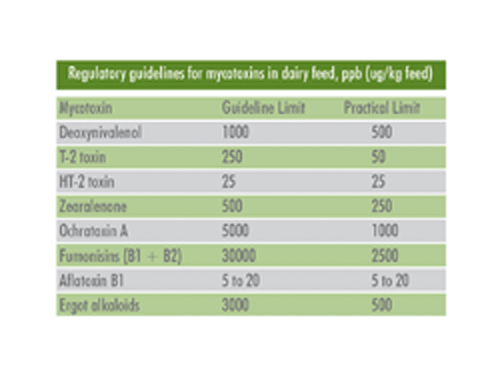Five Tips to Manage This Year's Potential Mycotoxins

It's raining, it's pouring, but no one is snoring yet this harvest. While showers this past week across much of the United States have helped improve drought conditions slightly, they didn't slow down the 2012 corn harvest. The United States Department of Agriculture estimates only 21 percent of corn and 29 percent of soybeans have yet to be harvested.
While combines are coming out of the fields early this year, there is still no rest for the weary. Due to this year's ominous drought, many producers are now faced with the challenge of how to feed the 2012 yield to their livestock.
"This year's climate created all the right ingredients for a cocktail of mycotoxin challenges," said Dr. Max Hawkins, Alltech Myctoxin Management Team. "Besides the industry-expected aflatoxin outbreak, we are finding that some other molds and mycotoxins may be big players in this year's crops from our 37+ Program analysis."
Alltech's 37+ Program uses a mass spectrometry technique, LC-MS2, that can investigate 38 different mycotoxins quantitatively and more than 50 others qualitatively in less than 15 minutes per sample analyzed, with limits of detection in the parts per trillion range.

According to Hawkins, the 37+ Program feed analysis results should be released soon. In the meantime, he has been giving his clients these five tips for dealing with poor quality feedstuffs:
1. Dry corn to 15 percent moisture or less within 24-48 hours of harvest. Reducing the moisture will help to stabilize the mold level and prevent further growth.
2. Screen grain to remove fines, broken kernels and foreign material as these are precursors to increased mold growth.
3. Have all ingredients that are grain or are sourced from grain analyzed for mycotoxins. This should be a comprehensive analysis that looks at numerous mycotoxins, not just one or two. There are more than 500 known mycotoxins, and the greatest percentage of samples contain from two to five mycotoxins.
4. Mycotoxin analysis should be conducted regularly throughout the storage process, as temperature and moisture changes will affect mold growth.
5. When purchasing ingredients, it may be difficult to locate mycotoxin-free feedstuffs. Many producers may find ingredients from certain areas that are consistently higher and will need to search for another source. Know the levels of mycotoxins that are practical and can be fed and the guideline limit that should not be fed to livestock.
For more information about the 37+ Program or any concerns relating to mycotoxins, please call the Mycotoxin Hotline at 866-322-3484.
10.23.2012